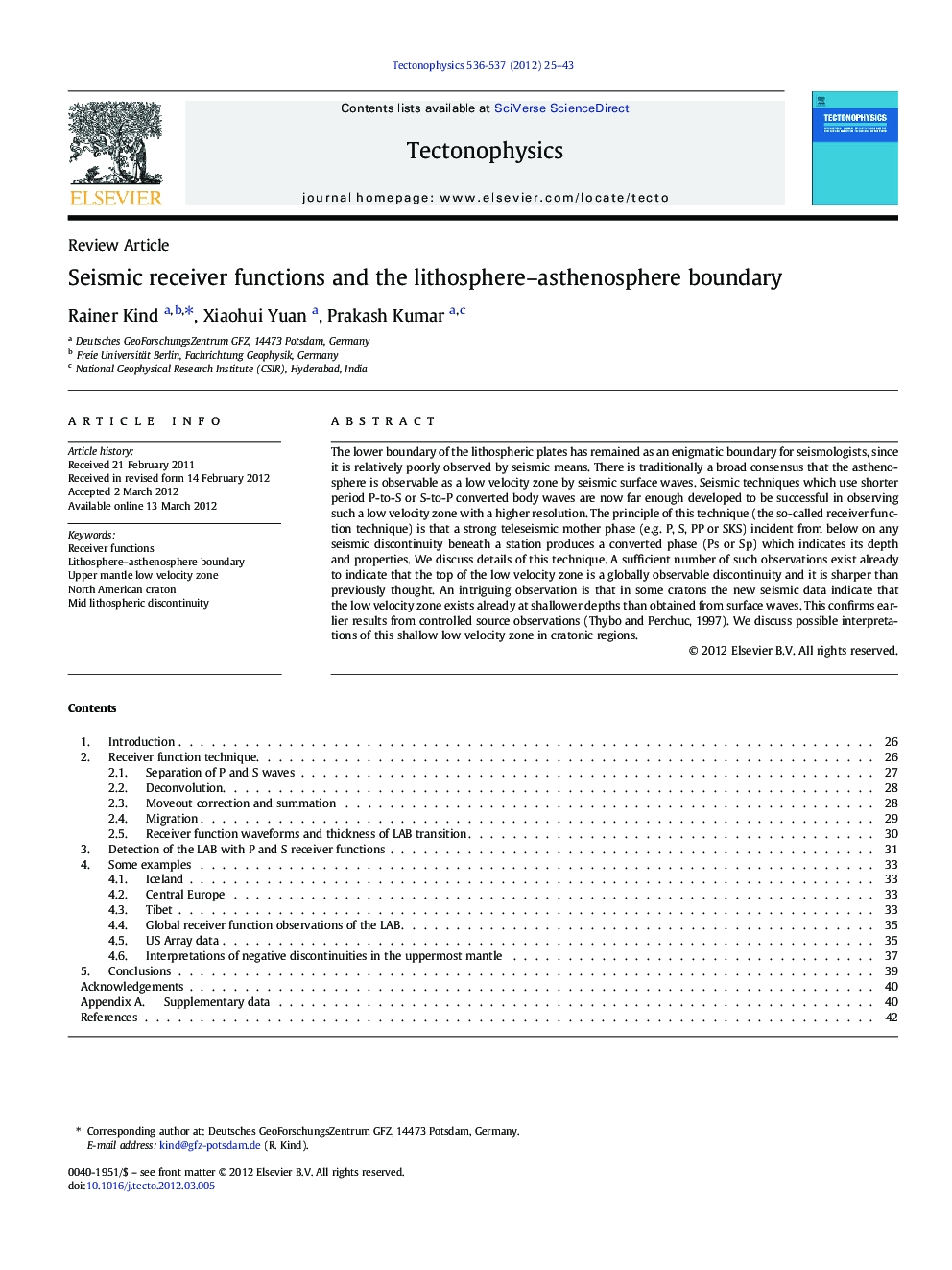| Article ID | Journal | Published Year | Pages | File Type |
|---|---|---|---|---|
| 4692839 | Tectonophysics | 2012 | 19 Pages |
The lower boundary of the lithospheric plates has remained as an enigmatic boundary for seismologists, since it is relatively poorly observed by seismic means. There is traditionally a broad consensus that the asthenosphere is observable as a low velocity zone by seismic surface waves. Seismic techniques which use shorter period P-to-S or S-to-P converted body waves are now far enough developed to be successful in observing such a low velocity zone with a higher resolution. The principle of this technique (the so-called receiver function technique) is that a strong teleseismic mother phase (e.g. P, S, PP or SKS) incident from below on any seismic discontinuity beneath a station produces a converted phase (Ps or Sp) which indicates its depth and properties. We discuss details of this technique. A sufficient number of such observations exist already to indicate that the top of the low velocity zone is a globally observable discontinuity and it is sharper than previously thought. An intriguing observation is that in some cratons the new seismic data indicate that the low velocity zone exists already at shallower depths than obtained from surface waves. This confirms earlier results from controlled source observations (Thybo and Perchuc, 1997). We discuss possible interpretations of this shallow low velocity zone in cratonic regions.
► Processing steps of the seismic receiver function technique with emphasis on shear wave receiver functions (S-RFs). ► S-RFs - a tool for detection of low velocity zones in the upper mantle, e.g. the lithosphere-asthenosphere boundary (LAB). ► The LAB is observed on a global scale by as a relatively sharp discontinuity with receiver functions. ► A shallow (~ 100km) low velocity zone is found below the North American craton with still unclear interpretation.
